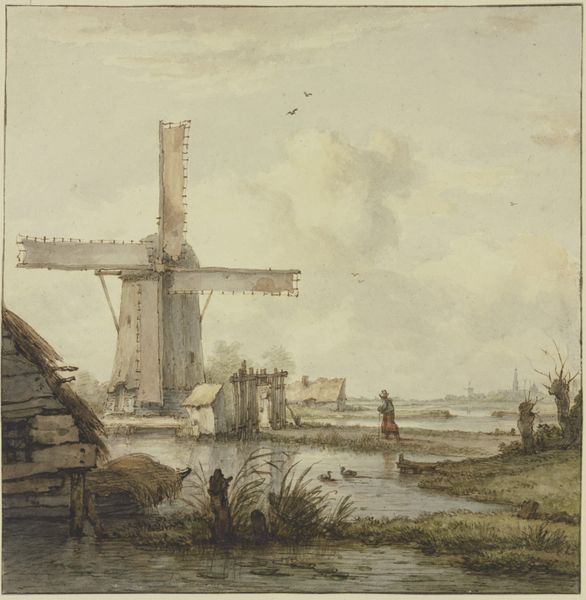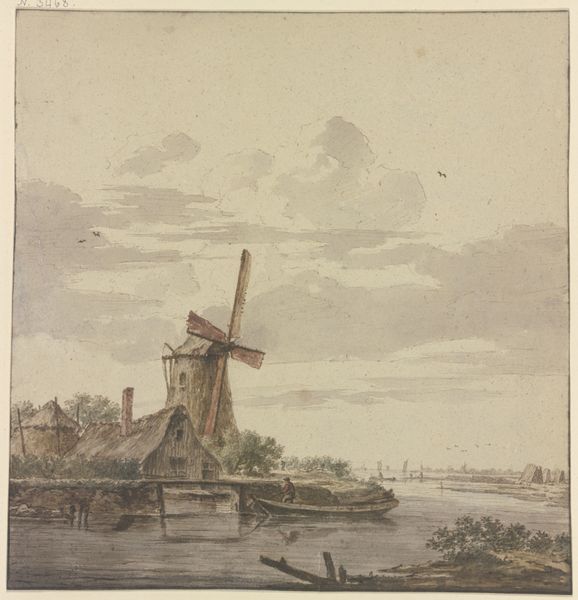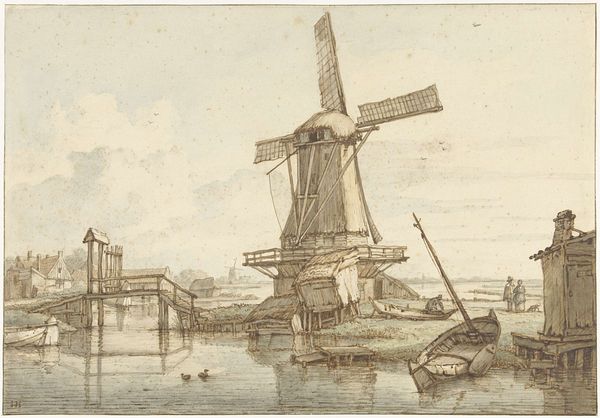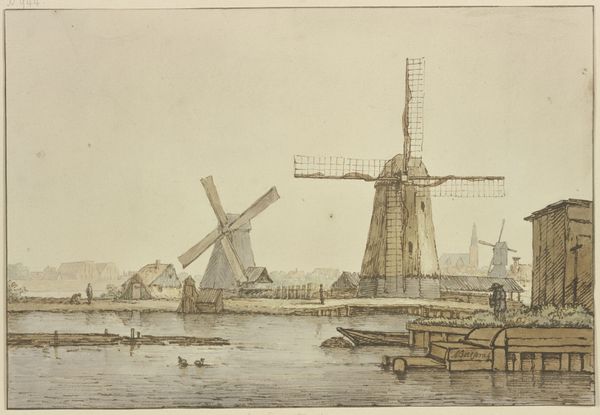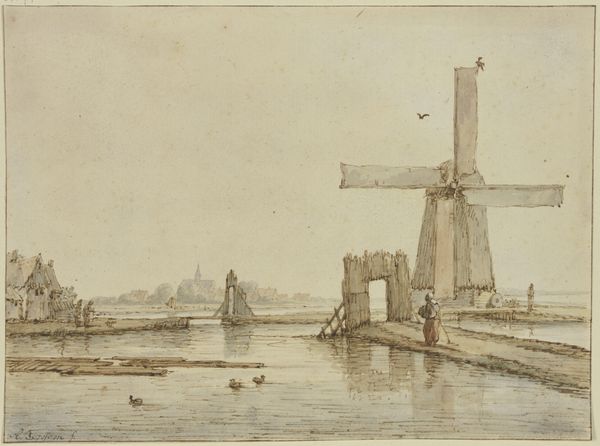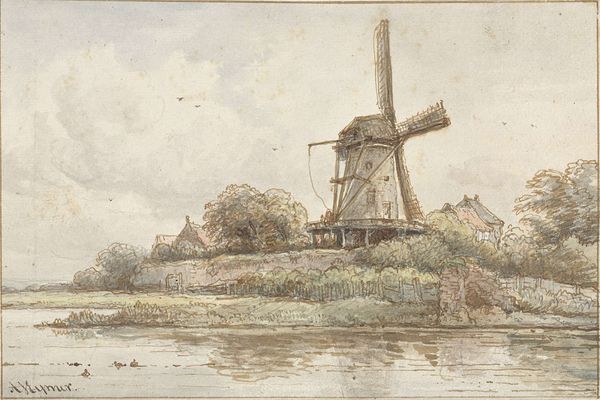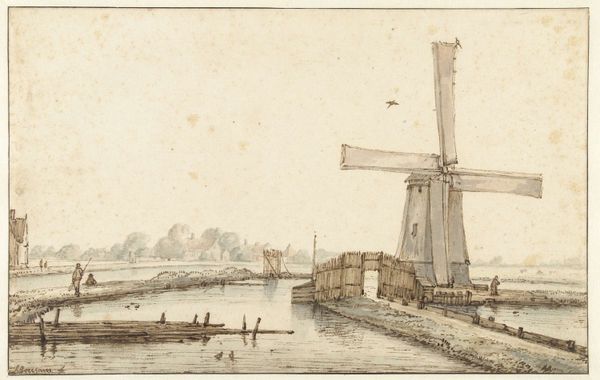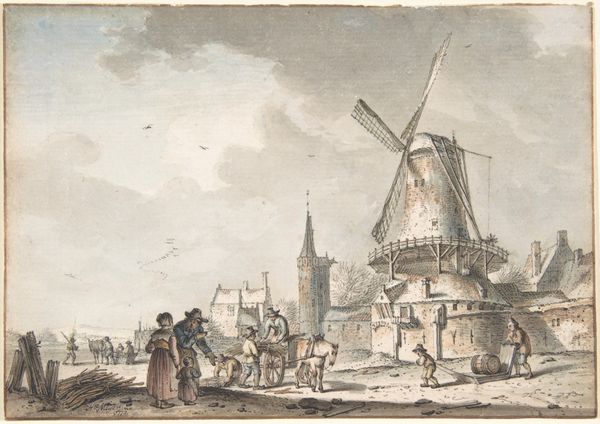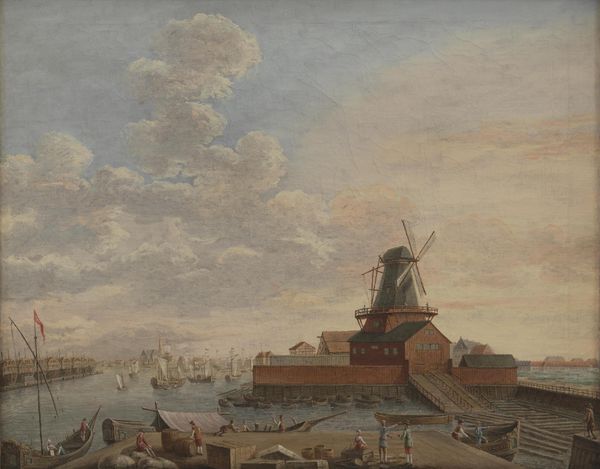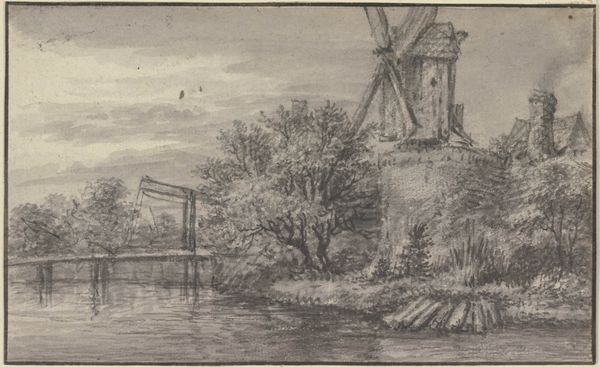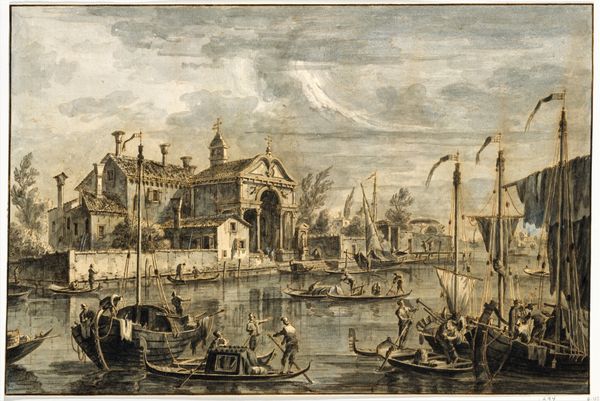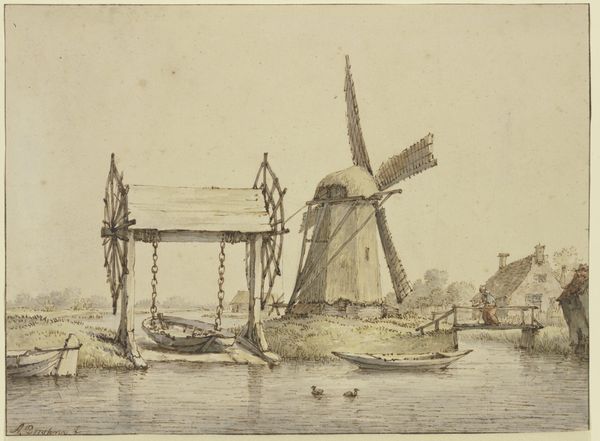
drawing, print, plein-air, watercolor
#
drawing
# print
#
plein-air
#
landscape
#
watercolor
#
coloured pencil
#
underpainting
Dimensions: sheet: 8 1/8 x 13 1/8 in. (20.7 x 33.4 cm)
Copyright: Public Domain
Curator: Before us hangs "View of a Canal with Three Windmills," a work attributed to Jan Hulswit, estimated to have been created between 1780 and 1822. It's currently part of the collection at the Metropolitan Museum of Art. Editor: Immediately, I am struck by the stillness. There is such a sense of serenity in the composition, despite the presence of industrial structures. The subtle blues and greys evoke a rather quiet, melancholic mood. Curator: Hulswit's choice of watercolor layered with underpainting allows him to establish clear geometric relationships between objects. Note the precise placement of the windmills in relation to each other. This imbues the piece with a sense of calculated perspective that is nonetheless believable, even as plein-air landscape. Editor: Absolutely, but the windmill itself holds profound symbolic weight in Dutch culture, doesn’t it? It represents ingenuity, perseverance against the elements. Seeing three of them together amplifies this, giving it an almost allegorical quality about Dutch identity and progress. These watercourses suggest harnessing nature for the purpose of survival and sustenance. Curator: Indeed, windmills, through their form and mechanics, visually signify function and societal structures of Dutch trade and agriculture. Take away the windmills and it's just a landscape of color blocks in a graded tonality: the precise composition brings into focus all aspects, so that the color choices become symbolic in service of industry, commerce, and travel, creating an image that speaks specifically of the Netherlands and its relationship with nature, culture, and utility. Editor: So, Hulswit masterfully encapsulates cultural identity. His approach invites us to see beyond a mere landscape—we witness an ethos represented. What does one take away from such visual storytelling? Curator: From a formalist perspective, it is the interplay between structure and tonal subtleties—Hulswit's achievement in blending naturalistic and geometric pictorial strategies to tell the story about nature, and to also allow this scene's architectural lines tell its own. Editor: A rather comprehensive picture then. Jan Hulswit truly manages to connect us not just with a time or a place, but an ongoing dialog of heritage through visual metaphors.
Comments
No comments
Be the first to comment and join the conversation on the ultimate creative platform.
